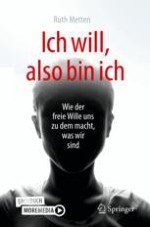Erschienen in:
2020 | OriginalPaper | Buchkapitel
2. Leben gedeiht in Freiheit
Zusammenfassung
In diesem Kapitel wird die Auffassung vertreten, dass Entscheidungen gar nicht bewusst getroffen werden müssen, um frei zu sein. Denn der freie Wille ist eine Eigenschaft des Lebens. Das trifft allerdings nur zu, wenn wir nicht eingleisig fahren, die Quantenphysik dem Zug des Lebens, tatsächliche Möglichkeiten und nicht nur Unvorhersehbarkeiten eröffnet, aus denen er wählen, zu denen er – um im Bild des Zugs zu bleiben – die Weichen stellen kann. So legen es Forschungsergebnisse der Quantenbiologie inzwischen nahe …
Anzeige















